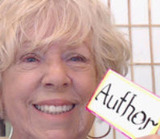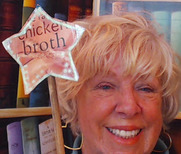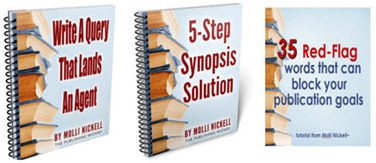5-Step Synopsis Solution~
Would you like to receive a synopsis critique from an industry professional (meaning moi)?
I'll be evaluating synopses at upcoming FWA events on September 10th (webinar) and October 5th (FWA meeting in St. Pete).
Submit your synopsis for possible evaluation at either event. Please specify if you'll be at the webinar or physically at the FWA St. Pete meeting. Thanks.
The information below will help you figure out what to put where.
. . . . . . . . . . . . . . . . . . . . . . . . . . . . . . . . . . . . . . . . . . . . . . . .
Why is it important to learn how to write a synopsis? If your goal is to land an agent to help you move through the publication maze, you must include an effective synopsis in your query submission email.
Your synopsis (like the query letter) is a make-or-break situation. Write it well and you increase the odds the agent will read it from beginning to end and continue to read your manuscript sample pages (the goal all along).
Write it poorly and they'll take a latte break instead.
Like the query letter, the synopsis is a sales document. Unlike the query that "teases" about the terrible "or else" that could occur, the synopsis tells the full story and reveals the ultimate resolution.
Writers struggle writing the synopsis if they have never written a query, or tried to write one but failed. Why? Because the synopsis uses some of the information already defined for the query. Not the exact wording, but the story core: who wants what (goal), why they can't have it (obstacle), and what happens (resolution).
. . . . . . . . . . . . . . . . . . . . . . . . . . . . . . . . . . . . . . . . . . . . . . . .
The Five (5)-Step Synopsis~
The synopsis, written in present tense, reveals the following in five (5) paragraphs.
One: First paragraph describes who wants what and why (goal), and what stands in their way (obstacle).
Two: Second paragraph expands the situation. Introduces the antagonist (person or situation that blocks the protagonist). Shows the thoughts and emotions of the protagonist as they struggle against the antagonist.
Three: Third paragraph moves the protagonist closer to goal achievement. Hints at the possibility of failure.
Four: Fourth paragraph heads toward the goal post. A “red herring” might suggest that failure (not success) is eminent and irreversible.
Five: Fifth paragraph reveals the story resolution as the protagonist succeeds or fails.
If you neglect to reveal goal, obstacle, and resolution in your synopsis, your manuscript sample pages will not be read. No agent will take the time to figure out the core of your story. You have to show and sell them.
. . . . . . . . . . . . . . . . . . . . . . . . . . . . . . . . . . . . . . . . . . . . . . . .
Before you begin . . .
Define the three major elements of a well-known story to guide you through the process of figuring out the story core before you begin to write your synopsis.
You may question the value of writing a synopsis for Jack and the Beanstalk, a story that's been published in a zillion languages around the world. It's all about helping you learn a new skill. When you hone synopsis-writing skills on a story you've known most of your life, the process becomes less arduous and more like an adventure of discovery with a trusted friend by your side.
Who wants what and why?
12-year old Jack’s goal is to prevent starvation. His goal evolves with the story when he must avoid capture and death at the hands of the giant.
What prevents him from achieving his goal?
Jack faces the initial obstacle of not knowing how to barter as he swaps Bossy the cow for a handful of “magic” beans. The giant becomes a "giant" obstacle as the story progresses.
How does Jack ultimately succeed or fail?
The beans produce a pathway for Jack to discover items he can steal and sell to keep food on the table. His obstacles and the resolution shift as the antagonist (the giant) enters the story.
Jack’s goal ultimately leads to a resolution much different than he had imagined.
Once you’re clear about the goal, obstacle, and resolution of your protagonist, your ready to write your synopsis, paragraph by paragraph.
. . . . . . . . . . . . . . . . . . . . . . . . . . . . . . . . . . . . . . . . . . . . . . . .
Use the following template as an example of a synopsis that follows my five (5) paragraph format. Study it, then write the first draft of a synopsis for your own story.
Why is it important to learn how to write a synopsis? If your goal is to land an agent to help you move through the publication maze, you must include an effective synopsis in your query submission email.
Your synopsis (like the query letter) is a make-or-break situation. Write it well and you increase the odds the agent will read it from beginning to end and continue to read your manuscript sample pages (the goal all along).
Write it poorly and they'll take a latte break instead.
Like the query letter, the synopsis is a sales document. Unlike the query that "teases" about the terrible "or else" that could occur, the synopsis tells the full story and reveals the ultimate resolution.
Writers struggle writing the synopsis if they have never written a query, or tried to write one but failed. Why? Because the synopsis uses some of the information already defined for the query. Not the exact wording, but the story core: who wants what (goal), why they can't have it (obstacle), and what happens (resolution).
. . . . . . . . . . . . . . . . . . . . . . . . . . . . . . . . . . . . . . . . . . . . . . . .
The Five (5)-Step Synopsis~
The synopsis, written in present tense, reveals the following in five (5) paragraphs.
One: First paragraph describes who wants what and why (goal), and what stands in their way (obstacle).
Two: Second paragraph expands the situation. Introduces the antagonist (person or situation that blocks the protagonist). Shows the thoughts and emotions of the protagonist as they struggle against the antagonist.
Three: Third paragraph moves the protagonist closer to goal achievement. Hints at the possibility of failure.
Four: Fourth paragraph heads toward the goal post. A “red herring” might suggest that failure (not success) is eminent and irreversible.
Five: Fifth paragraph reveals the story resolution as the protagonist succeeds or fails.
If you neglect to reveal goal, obstacle, and resolution in your synopsis, your manuscript sample pages will not be read. No agent will take the time to figure out the core of your story. You have to show and sell them.
. . . . . . . . . . . . . . . . . . . . . . . . . . . . . . . . . . . . . . . . . . . . . . . .
Before you begin . . .
Define the three major elements of a well-known story to guide you through the process of figuring out the story core before you begin to write your synopsis.
You may question the value of writing a synopsis for Jack and the Beanstalk, a story that's been published in a zillion languages around the world. It's all about helping you learn a new skill. When you hone synopsis-writing skills on a story you've known most of your life, the process becomes less arduous and more like an adventure of discovery with a trusted friend by your side.
Who wants what and why?
12-year old Jack’s goal is to prevent starvation. His goal evolves with the story when he must avoid capture and death at the hands of the giant.
What prevents him from achieving his goal?
Jack faces the initial obstacle of not knowing how to barter as he swaps Bossy the cow for a handful of “magic” beans. The giant becomes a "giant" obstacle as the story progresses.
How does Jack ultimately succeed or fail?
The beans produce a pathway for Jack to discover items he can steal and sell to keep food on the table. His obstacles and the resolution shift as the antagonist (the giant) enters the story.
Jack’s goal ultimately leads to a resolution much different than he had imagined.
Once you’re clear about the goal, obstacle, and resolution of your protagonist, your ready to write your synopsis, paragraph by paragraph.
. . . . . . . . . . . . . . . . . . . . . . . . . . . . . . . . . . . . . . . . . . . . . . . .
Use the following template as an example of a synopsis that follows my five (5) paragraph format. Study it, then write the first draft of a synopsis for your own story.
|
ONE: Reveals who wants what and why. TWO: Expands the situation, introduces the antagonist. Protagonist takes action to overcome the obstacle(s). He feels timid, terrified, and covers under objects to conceal his presence. He hurries home as soon as possible, clutching the stolen coin. Jack proves, at the moment, that the end (avoiding starvation) justifies the means (stealing). THREE: The protagonist moves closer to goal achievement. The possibility of failure is introduced. Jack discovers he's quite good at stealing, and pushes his luck. The story hints at the potential for disaster. FOUR: The goal post is in sight. But, the potential for failure and disaster for the human world loom on the horizon. FIVE: Reveals the story resolution as the protagonist succeeds (or fails). |
Because the query and synopsis are emailed together (along with your sample pages), your synopsis must not be a carbon copy of your query. It utilizes some of the information from your query, but not word for word.
That's good news! Really truly!
Because you don't have to repeat what you've already written, you have more space to expand your story. This is good news. The more of your story you reveal, the greater the chances that the agent will scroll down and read your sample pages.
This is why you need to understand and define the big three: goal, obstacle, and resolution (explained in my query tutorial).
That's good news! Really truly!
Because you don't have to repeat what you've already written, you have more space to expand your story. This is good news. The more of your story you reveal, the greater the chances that the agent will scroll down and read your sample pages.
This is why you need to understand and define the big three: goal, obstacle, and resolution (explained in my query tutorial).
TRIPLE WHAMMY SPECIAL OFFER!
This is a great time to expand your understanding about how to write the query and synopsis, then self-edit your work to locate and eliminate "red-flag" words.
Act now, and save $14 (35%). Is this a good deal or what?
Act now, and save $14 (35%). Is this a good deal or what?

MolliMart offers an ever-expanding resource for low-cost tutorials, created to help you achieve the dreams of your heart: agent, book contract, and shelf space at Barnes and Noble.





